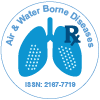The Menace of Vector-Borne Diseases: Understanding, Prevention and Control
Received Date: Apr 01, 2024 / Accepted Date: Apr 29, 2024 / Published Date: Apr 29, 2024
Abstract
Vector-borne diseases (VBDs) represent a significant global health challenge, affecting millions of people annually and posing a considerable burden on healthcare systems worldwide. These diseases are transmitted by vectors such as mosquitoes, ticks, sandflies, and fleas, which serve as intermediaries between pathogens and humans or animals. The complexity of VBD transmission dynamics is influenced by various ecological, environmental, social, and biological factors, making them particularly challenging to control and eradicate. Climate change, urbanization, population movement, and land-use changes further exacerbate the spread and intensity of VBDs, creating a pressing need for interdisciplinary approaches to understanding and addressing these diseases. Its provides an overview of the current state of knowledge regarding VBDs, highlighting key aspects of their epidemiology, transmission mechanisms, vector biology, and control strategies. It explores the diverse range of pathogens involved in VBDs, including viruses, bacteria, protozoa, and helminths, and examines their interactions with vector species and host populations. Additionally, the abstract discusses the importance of surveillance, early detection, and integrated vector management strategies in mitigating the impact of VBDs on public health.
Furthermore, the abstract emphasizes the critical role of research and innovation in developing novel interventions, vaccines, and vector control tools to combat VBDs effectively. Collaborative efforts between governments, international organizations, academia, and the private sector are essential for strengthening healthcare systems, improving vector surveillance capabilities, and enhancing public awareness and education about VBD prevention and control measures. By addressing the underlying drivers of VBD emergence and transmission, implementing evidence-based interventions, and fostering global cooperation, we can work towards reducing the burden of these diseases and achieving sustainable health outcomes for populations worldwide.
Citation: Lakshmi P (2024) The Menace of Vector-Borne Diseases: Understanding, Prevention and Control. Air Water Borne Dis 13: 227.
Copyright: © 2024 Lakshmi P. This is an open-access article distributed under the terms of the Creative Commons Attribution License, which permits unrestricted use, distribution, and reproduction in any medium, provided the original author and source are credited.
Share This Article
Open Access Journals
Article Usage
- Total views: 737
- [From(publication date): 0-2024 - Apr 05, 2025]
- Breakdown by view type
- HTML page views: 556
- PDF downloads: 181
